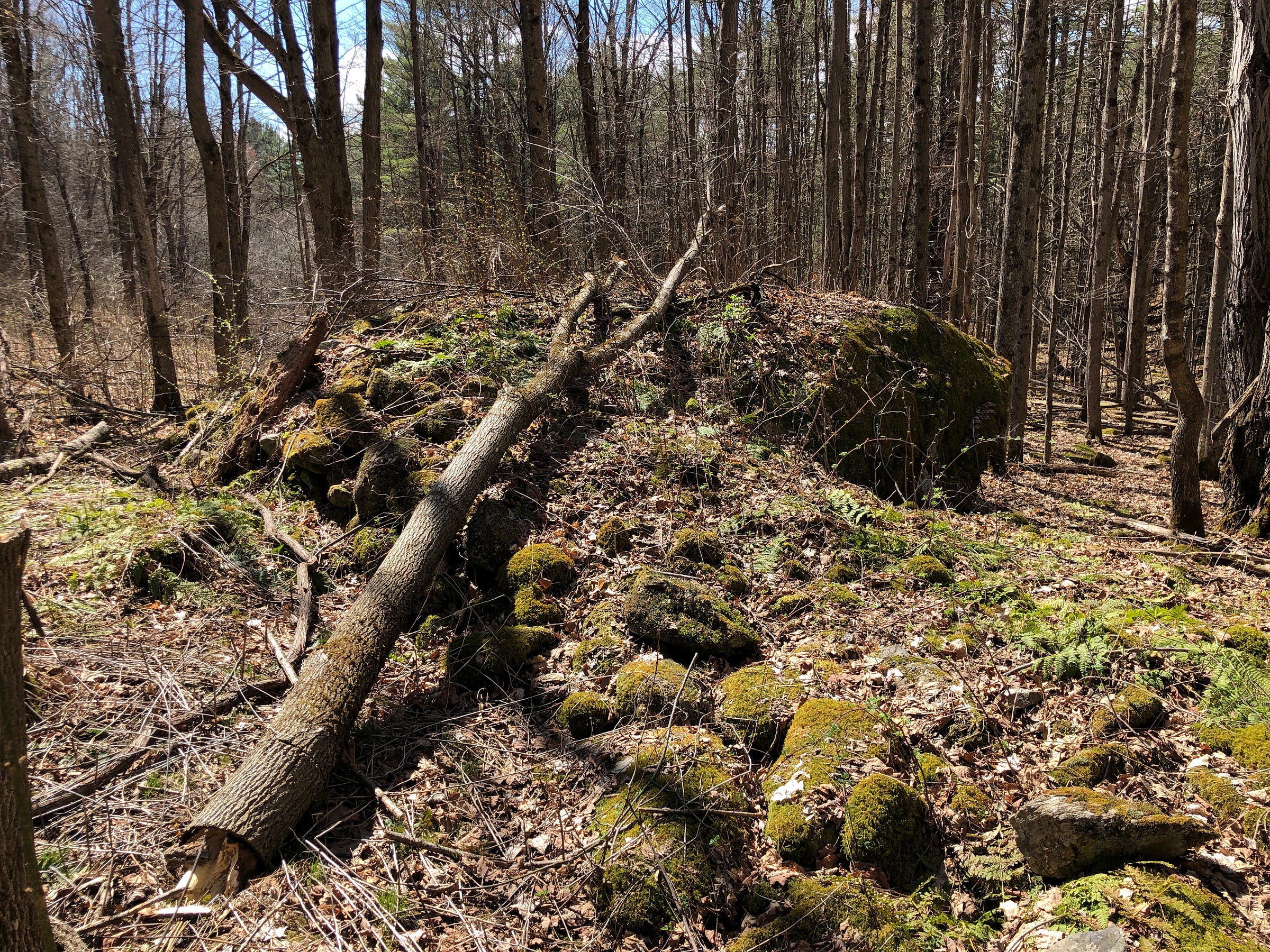"What's The 'Deal'..." Indigenous Stonework In New England
Educating and Increasing Awareness About The Northeast's Little-Known Legacy of Indigenous Stonework
I posted a variation of this basic explanation of why I do what I do as an Independent Stone Site Investigator and Researcher on Facebook, and thought it would be good to share here, too… -M.L.
"What's the 'deal' with talking about possible Indigenous Stonework in New England? Indians didn't build with stone," some will incorrectly assume and say when they come across this Substack.
Oh yes they did. Or, I should say, yes they do - Native American, especially Narragansett, stone masons are still building with stone in the region. And the oldest human-constructed stone wall archaeologists have found in Massachusetts was an Indigenous-built stone row on the dripline of a 5000 year old Rockshelter in Flagg Swamp in Marlborough, the stone row at least 4000 years old.

Don't ask to see the stone row now because they dynamited the Rockshelter and the wall to build a highway - this is Massachusetts, after all. Horrendous record of preservation of Indigenous work. The state historic office doesn't recognize Indigenous stonework, and has no problem with developers blowing up even documented work, which seems incredible.
In general, the public still has little to no awareness of even the possibility there even is Indigenous Stonework in New England. My goal - with this Substack, my Facebook Group, my videos, my book - is to educate others and increase awareness about this hidden and unknown legacy of Indigenous stonework in the Northeast of what's now North America. So, I share what folks are finding, what researchers have found, what Indigenous folks have shared or suggested, what archaeologists open to the concept have to say, as we seek more awareness, preservation and maybe even understanding of Indigenous Stonework in the Northeast.
The predominant story in our culture is that the stonework in the woods and forests of New England was constructed since colonial times by settlers or for later sheep pens. Others suggest pre-Columbian Europeans explored and built stonework. But there’s simply too much stonework, and too much built in far too many impractical places and ways, for the sheep or the Colonial explanations. We really don’t find evidence that any pre-Columbian Europeans were here in enough numbers to build much of it, either.

Much of the underlying stonework is likely Indigenous stonework. Though we’re taught that Indigenous Peoples didn't build with stone in the Northeast, this is incorrect. The book MANITOU (1989) by James Mavor and Byron Dix first opened eyes to the possibility indigenous folks in New England and the northeast actually did work with stone, building Ceremonial Stone Landscapes (CSLs) and more. The United South and Eastern Tribes (USET) confirmed this to be the case in several Resolutions in the 2000’s. Archaeologist Curtiss Hoffman shared his academic study in support in 2018’s "Stone Prayers". The excellent 2023 collection "Our Hidden Landscapes", edited by Lucianne Lavin & Elaine Thomas, provided more recent research work in the field from Indigenous, Academic and Amateur voices. Many independent researchers have carried on – and still carry on – work in this area.
New England stonework may be more ancient and sacred than once assumed and may be components of Indigenous Ceremonial Stone Landscapes. Many in this Group explore this idea. We try to keep discussions open, but we do draw the line at speculative work published and supported by Nazis and Neo Nazis. Please check your sources.
Much of what I share is of a speculative nature, so I use conditional language - possible, potential, could be, might be - unless an origin is firmly established. In the interest of Preservation, I allow for overcompensation and overattribution after years of denial and no attribution, and so I want to be clear on my speculation.
The photos throughout this piece are of what I believe may be Indigenous Stonework I have seen around New England.













Indigenous stonework is so interesting, thanks for the post!! I grew up in New England, and saw structures like the ones you included a fair few times. There were actually a few in the woods behind my house, but we didn't know if they were from farmers or native americans. This post really has me thinking about it again